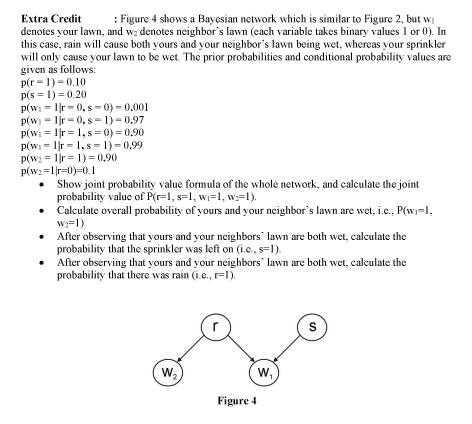Home /
Expert Answers /
Computer Science /
extra-credit-figure-4-shows-a-bayesian-network-which-is-similar-to-figure-2-pa327
(Solved): Extra Credit : Figure 4 shows a Bayesian network which is similar to Figure 2 ...

Extra Credit : Figure 4 shows a Bayesian network which is similar to Figure 2, but w/ denotes your lawn, and denotes neighbor's lawn (each variable takes binary values 1 or 0 ). In this case, rain will cause both yours and your neighbor's lawn being wet, whereas your sprinkler will only cause your lawn to be wet. The prior probabilities and conditional probability values are given as follows: - Show joint probability value formula of the whole network, and calculate the joint probability value of . - Calculate overall probability of yours and your neighbor's lawn are wet, i.e., . ) - After observing that yours and your neighbors lawn are both wet, calculate the probability that the sprinkler was left on (i.e, ). - After observing that yours and your neighbors' lawn are both wet, calculate the probability that there was rain (i.e, ).
Expert Answer
The joint probability formula of the network can be written as:$P(r, s, w_1, w_2) = P(r)P(s)P(w_1 \mid r, s)P(w_2 \mid r)$where